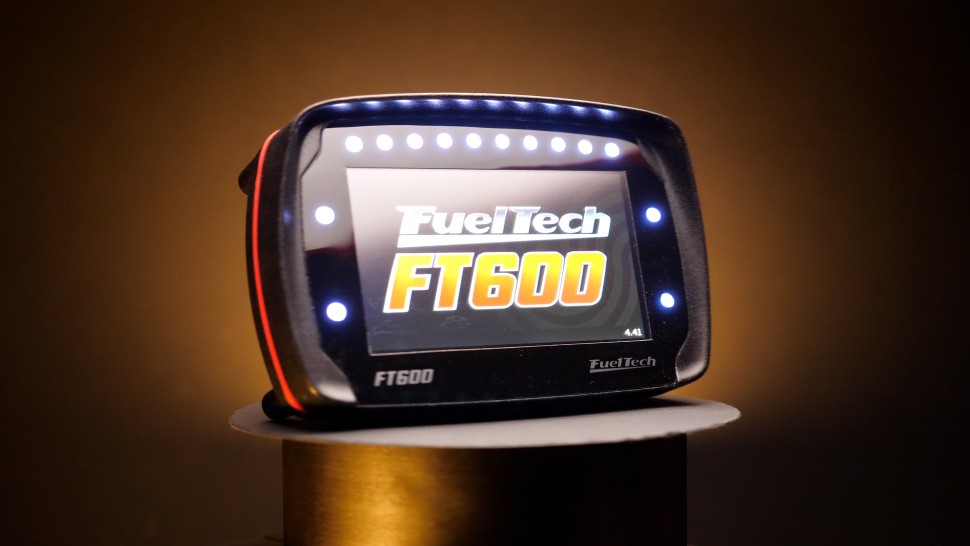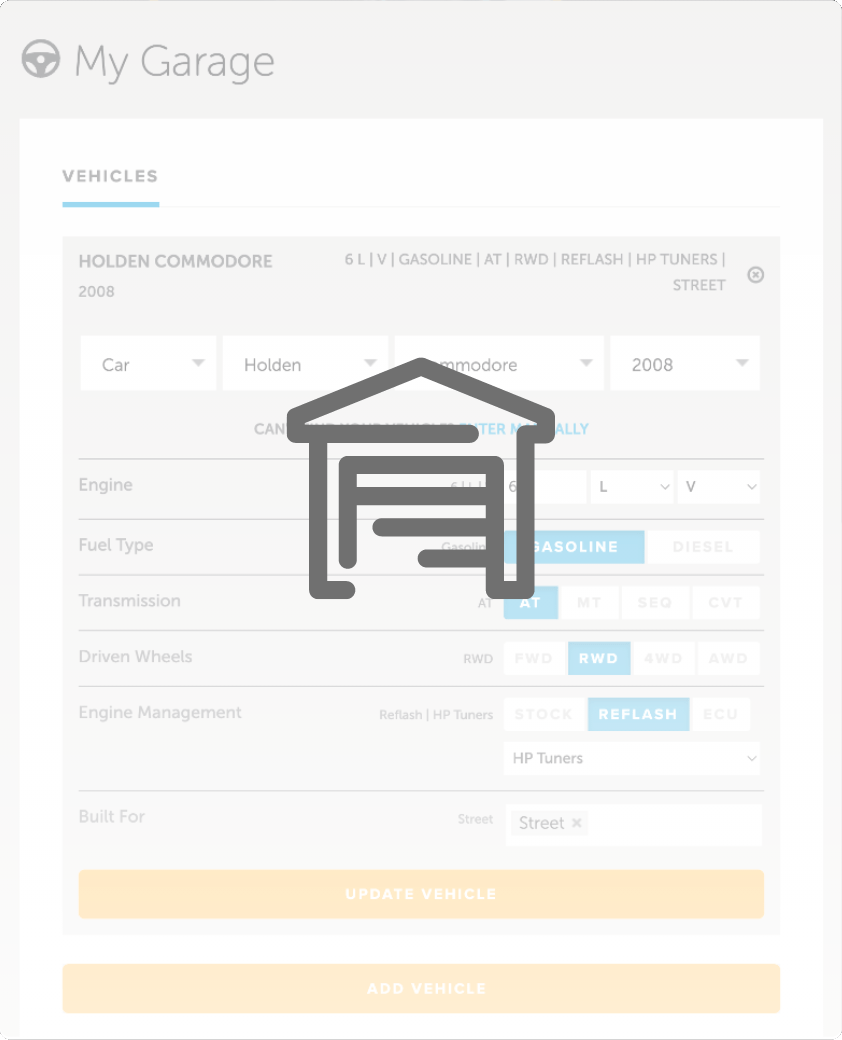| 00:00 |
In this worked example we're going to be applying the HPA 10 step tuning process to the Holley Sniper 2.
|
| 00:05 |
This particular Sniper 2 is fitted to our 1966 Chevrolet C10 which is fitted with a 350 Chev, completely 100% stock standard.
|
| 00:15 |
Before we dive into this, it is a little bit different to our usual worked example so I'm just going to explain how that works but we'll start by talking about what the Holley Sniper 2 is.
|
| 00:25 |
And essentially it is an electronic carburettor.
|
| 00:28 |
It's designed to make EFI conversion very very easy in that you don't need to source all of the different components and sensors and then go through a complex job of wiring these up to an aftermarket ECU.
|
| 00:41 |
Instead, really we just simply unbolt the existing carburettor, bolt the Holley Sniper 2 on in its place, there's a modest amount of wiring in its simplest format, about 5 wires need to be connected.
|
| 00:52 |
Obviously, we do need to convert the fuel system to EFI, which results in higher pressure than what the carburetted system would normally need and then we're essentially good to go, ready to start up with the EFI system installed.
|
| 01:06 |
So, all in all, on this particular vehicle we got the EFI conversion done in just a few hours so it is very very simple.
|
| 01:13 |
The other part with the Sniper 2, probably the most important part though is that Holley have very clearly focused this product around a market which doesn't really want to get involved with laptop tuning.
|
| 01:25 |
So, in its simplest form, and really I guess its claim to fame is that it is self tuning, we can answer some simple questions about the engine configuration that we have fitted the carburettor to and from there the Holley Sniper 2 wizard will create a calibration to suit, that should be enough to get the engine up and running to start with and from here, once it's up to temperature, the auto tuning or self learning with the fueling will trim the fueling as we drive.
|
| 01:54 |
And as you'll see, it does just about exactly what it says on the label in that regard.
|
| 02:00 |
When you're purchasing and installing a Sniper 2, there are a range of options in terms of how you can install it and we're going to try and cover the broad range here so that this worked example's going to be suitable to just about everyone.
|
| 02:12 |
There are a range of options as to how we can purchase the kit itself or what add ons we're going to be purchasing as well as how we install and control it.
|
| 02:21 |
And for this worked example, we're essentially going to be covering the entire range so that it's going to be suitable to just about any Sniper 2 installation.
|
| 02:28 |
We start obviously with the Sniper 2 itself but as I mentioned, we do need to upgrade the fuel system if we've got an existing carburettor car.
|
| 02:36 |
Holley do offer a fuel system kit so it's basically got everything you're going to need with the exception of an actual fuel tank, high pressure fuel pump, filters, some fuel lines and importantly the fuel pressure regulator.
|
| 02:48 |
So, that's what we added to our kit.
|
| 02:50 |
When it comes to the ignition side of this system, there's a couple of options as to how we can deal with this.
|
| 02:55 |
In its simplest format we can just simply leave the existing distributor that was obviously quite happily controlling spark with the carburettor previously installed.
|
| 03:04 |
This obviously does limit our options for tuning our spark curve and we'll get into that as we get further through this worked example but essentially without actually recreating the curve inside the distributor which is possible but tricky and quite a specialised job, we're really limited to swinging the distributor to advance the entire or retard the entire ignition curve forwards and backwards.
|
| 03:27 |
Effective to a point but definitely not going to give you pinpoint control like we'd normally see with EFI.
|
| 03:33 |
What we've chosen to do here is add in the optional Holley Hyperspark electronic distributor.
|
| 03:39 |
This connects straight up to the Sniper 2, just plug and play and that gives us full control of the ignition as well so when we get into the tuning we will be covering both of those options.
|
| 03:50 |
I also want to just talk about how we can actually manipulate the Sniper 2 in terms of tuning changes.
|
| 03:55 |
Again, because this product is kind of focused initially at the less technology literate market, you don't need a laptop and it does come with a 3.5 inch LCD touchscreen which we can make some of our tuning changes from.
|
| 04:10 |
Tuning changes is probably actually a stretch, we can make calibration adjustments or sensor adjustments and we can run through our setup wizard but fine tuning from that 3.5 inch LCD touchscreen obviously is going to be quite tricky.
|
| 04:24 |
However it does the job and particularly if you're going to be leaning heavily on the self tuning side of this, it's absolutely enough for the job.
|
| 04:31 |
On the flip side of this, you can purchase a separate CAN cable that will connect your Sniper 2 to laptop tuning software and at this point it sort of starts really acting and behaving much like any aftermarket standalone ECU.
|
| 04:44 |
So, the great thing with this product is if you are very new to EFI and you don't like technology and you don't like laptops, you can absolutely start with the self tuning functionality on that 3.5 inch touchscreen and then once you're a bit more comfortable, if you want to extract a little bit more performance and a bit more control out of the Sniper 2, you can purchase the required CAN cable, connect it to your laptop and you'll learn exactly how to use that laptop software as we go through this worked example.
|
| 05:11 |
It's also probably worth discussing who this product is designed for or who it's right for and just as importantly, who it's not right for.
|
| 05:19 |
It's designed to be simple and in that way it uses throttle body injection where the injectors are located in what does look on face value to be a carburettor.
|
| 05:30 |
All of the sensors other than the coolant temp sensor are also located inside of the throttle body injection system as well.
|
| 05:38 |
So, it really is a case of just unbolting the carburettor and bolting this on.
|
| 05:42 |
But throttle body injection does come with some downsides.
|
| 05:45 |
It's not going to give you the accuracy and control that we would get from multipoint injection but of course it is much simpler and also dramatically cheaper than fitting a multipoint fuel injection inlet manifold.
|
| 05:57 |
So,me of the downsides around throttle body injection are that we can end up getting airflow and fuel flow distribution errors to different cylinders.
|
| 06:04 |
So, what I'm saying here is we might not get perfect air fuel ratio on every single cylinder, we also don't have the ability to trim individual cylinders if we find that one is rich or lean for example.
|
| 06:16 |
The other downside here with throttle body injection is of course we can't time the injection event to the intake valve opening and closing point on each individual cylinder.
|
| 06:25 |
There can be a few problems around this such as the idle quality might not be quite as good as we'd get with multipoint fuel injection and there can sometimes be some transient downsides with throttle body injection compared to multipoint just given the distance the injection or the injectors are from the intake port in comparison to a multipoint manifold.
|
| 06:47 |
So, this really comes down to who is this product right for? And ideally I think this suits really well to a EFI conversion on a low to moderate power engine, something where we're not looking for every last horsepower.
|
| 07:02 |
Now, I think that would probably cover quite a large portion of EFI conversions on things like our C10 where we're not really after maximum power, we just want the vehicle to drive nicer and have all of those benefits of EFI.
|
| 07:15 |
Flipside of this is if you were looking at building a high compression, high RPM naturally aspirated screamer or maybe a twin turbo combination where you're looking for maximum power, then this probably isn't the best product for those particular applications.
|
| 07:31 |
And saying that, we're limited here due to the size of the injectors to around about 650 horsepower in naturally aspirated form anyway.
|
| 07:39 |
So, it really is a case of choosing the right tool for the job and in our case I think it's pretty much a perfect match.
|
| 07:45 |
One more point I want to just make about the installation is that due to the self learning, it obviously comes with a lambda or oxygen sensor that needs to be fitted in the exhaust.
|
| 07:54 |
It is single channel here, obviously we've got a V8.
|
| 07:58 |
So, it's important that that sensor is sampling all 8 cylinders.
|
| 08:02 |
So, ideally what we want to do is fit this to a merge collector or collector where both banks of exhaust gas come together so we're getting that average sample of all 8 cylinders.
|
| 08:13 |
Now, that we've got an understanding of what the system is, I just want to talk about how we're going to be dealing with this particular worked example.
|
| 08:20 |
What we're going to be doing essentially is dealing primarily with the laptop tuning side of things because this is where there's a lot more work involved from the tuning standpoint and at each step where relevant I will be covering off how we'd deal with this if we're only using the 3.5 inch LCD screen and focusing on the self tuning.
|
| 08:39 |
We're going to be doing all of this on our Mainline Pro Hub dyno of course but particularly with the self tuning, this can be done simply driving the car around the road or on a racetrack for example.
|
| 08:50 |
As I've already mentioned, when it comes to the ignition side of our tuning process, we're going to be dealing with the HyperSpark electronically controlled distributor.
|
| 08:59 |
So, we're going to be dealing with that like we would any other aftermarket standalone ECU with full control of ignition and fuel.
|
| 09:05 |
But I will also add in some sub modules, if we are using the existing distributor, we're just going to be advancing and retarding the entire curve to try and optimise it and find MBT.
|
| 09:16 |
So, now that we know what we're going to be dealing with, let's jump into the first step of our 10 step process.
|





